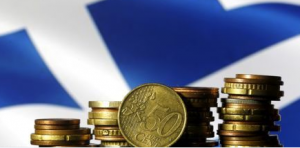Greece’s imminent return to markets will be a step towards a successful exit from its euro zone-funded bailout program, but it will not be an overnight change.
The process, European Union officials say, will require a series of successful bond sales and the build-up of a “sizeable” cash buffer.
Euro zone creditors are keen to see Athens develop a strategy to tap the markets well before the end of its current 86-billion-euro financial aid program, so that when the bailout expires in August 2018 the country will be more likely to stand on its own feet.
But at the same time, there is concern about potential Greek complacency or backtracking that could necessitate an extension of financial support and continued monitoring of Greece’s reforms.
Three EU officials, asking not to be named, told Reuters that Athens’ first task should be to refrain from any hints about retreating from agreed reforms. That would increase instability, especially as the country comes under markets’ close watch again.
A return to markets is on the cards soon. Investors expect Greece to raise at least 3 billion euros in five-year bonds once its benchmark borrowing costs drop below 5 percent, a level it is fast approaching .
It would be the country’s first borrowing since 2014 when it briefly returned to markets with two issuances before plunging again into financial trouble. In that sale, it raised in the first issuance 3 billion euros with five-year bonds yielding 4.95 percent.
Who buys the bonds will also be key for Greece. To be deemed successful, one euro zone official said, a new sale should attract mostly foreign capital, with minimal participation of Greek banks.
PROLONGED MONITORING?
Even if the issuance is successful in terms of investors interest and yields, euro zone officials also caution that Athens should not relax, because part of the money is meant to be used to build cash buffers.
The European Commission has said Greece should set aside around 9 billion euros to cover financing needs for the first 10 months after the end of the bailout program.
Part of this money is expected to come from savings and new euro zone loans under the existing program. But a chunk of the buffer should be built also with the funds borrowed from the markets, two of the officials said.
To reach the target buffer and fully rebuild its creditor reputation, Greece should tap the markets more than once before August 2018, and with issuances of different, longer maturities, officials added.
Backtracking on reforms, even if bond issuances were successful, could increase creditors’ appetite to push Greece to consider a precautionary credit line from the euro zone bailout fund, the European Stability Mechanism (ESM), after the end of its current bailout program, the third since 2010, officials said.
Other euro zone countries which received financial aid after the 2010-2012 bloc’s debt crisis, such as Ireland and Portugal, refused to use this facility, which is meant to calm markets with a guarantee of support in exchange for prolonged international monitoring on reforms and savings.
Greece would have to ask for this support, a politically unpalatable move in Athens, but a measure seen as useful by creditors to keep control on the country at least until agreed reforms on pensions and tax are implemented in 2019 and 2020.
Ask me anything
Explore related questions





